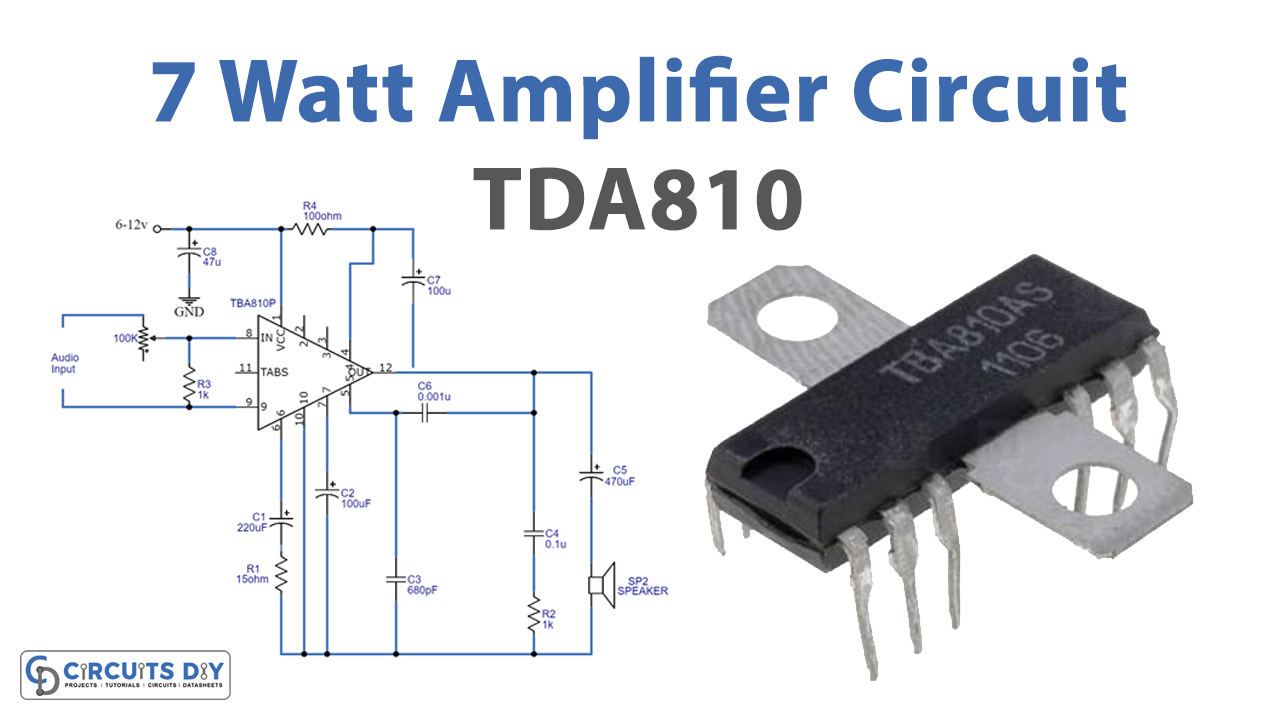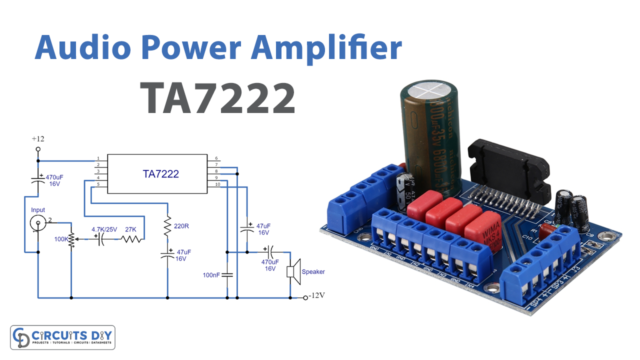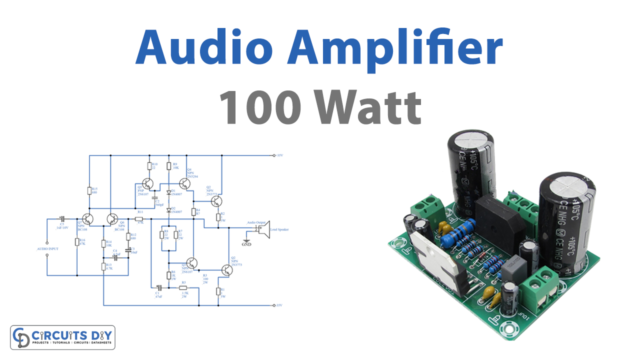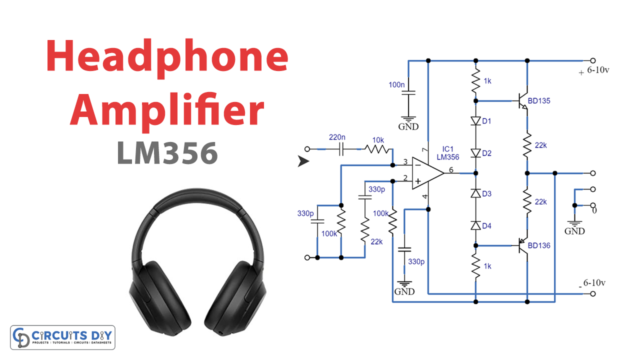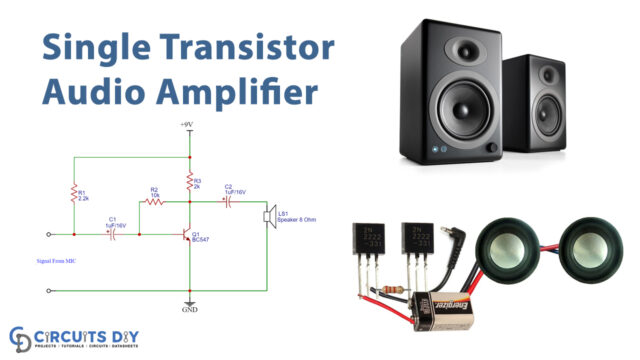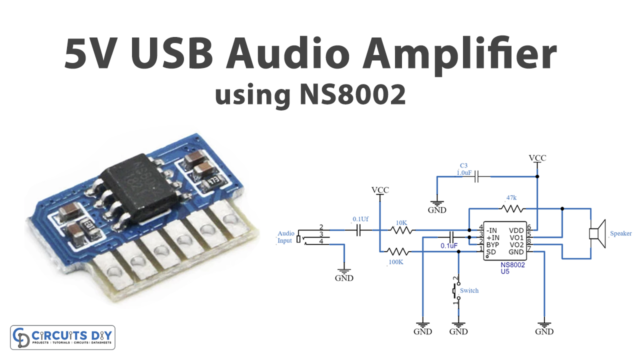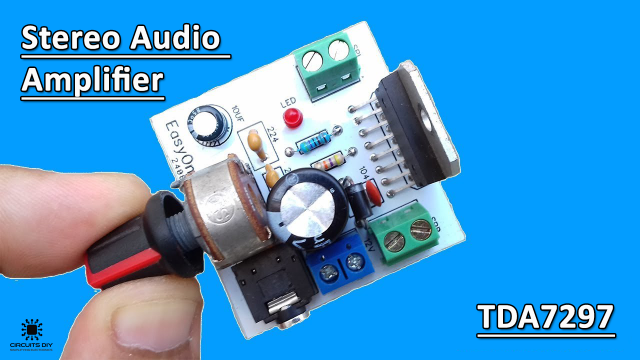In this tutorial, we are going to make a “TDA810 Amplifier Circuit Diagram”. The term amplifier refers to any device that increases the amplitude of a signal, usually measured in voltage or current. This versatile device is used in a variety of different electronic applications. Especially in audio technology, a wide range of amplifiers can be produced based on product specifications (i.e. power, voltage, current). Here we design a simple and cost-effective audio Amplifier circuit by using IC TBA810, it is a 7-watt audio amplifier Integrated circuit.
It is fabricated as a monolithic integrated circuit, in a 12-lead quad in-line plastic package. Intended for use as a low-frequency class B amplifier, it is most suitable for general-purpose low-power audio amplifier design. This IC incorporated a built-in-terminal shutdown, which automatically reduces the output in the event of sustained overloads or if the heat sinking arrangement is inadequate. We use a few passive components, like resistors and capacitors to give 7W output. This IC can handle 6V to 20V (500mA) bias input and drives a 4Ω to 16Ω speaker at the output.
Hardware Required
| S.no | Component | Value | Qty |
|---|---|---|---|
| 1. | IC | TDA810 | 1 |
| 2. | Variable Resistor | 100KΩ | 1 |
| 3. | Resistor | 100KΩ,15KΩ,100Ω,47Ω | 1,1,1,1 |
| 4. | Capacitor | 47uf,220uf,100uf,680pf,0.1uf,470uf,0.001uf | 1,1,2,1,1,1,1 |
| 5. | Speaker | 4Ω, 16Ω | 1 |
| 6. | Connecting Wires | – | – |
| 7. | Battery | – | 1 |
Circuit Diagram
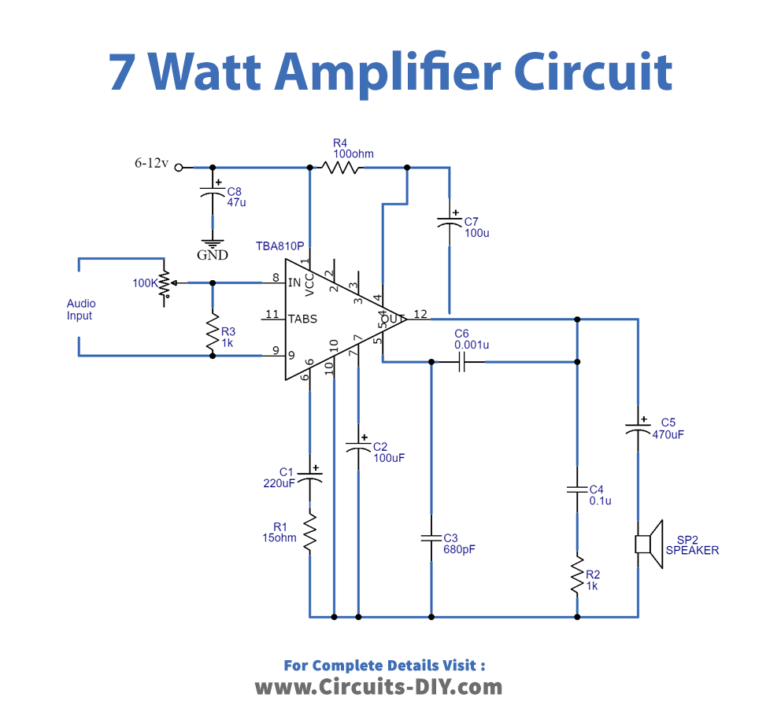
IC TDA810 Pin Details
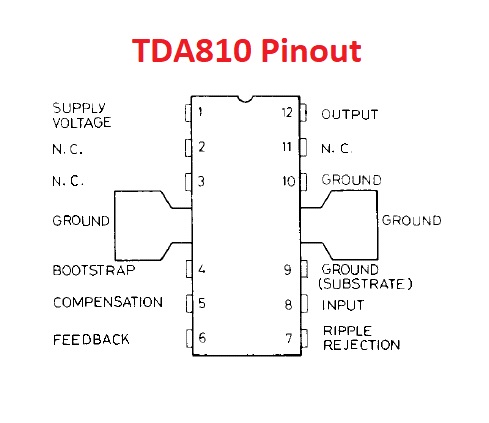
Working Explanation
As we can see in the circuit, the main part of the circuit is TBA810 IC. Here audio signal input is given to the non-inverting pin 8 of TBA810 IC through volume control variable resistor VR1, and output is taken out from pin 12. Other pins are filled up with resistor and capacitor components. Tabs on both sides of the IC are grounded, and IC can be covered with a heat sink.
After completing the construction, we need to power the circuit and choose a power supply according to the required output power. Thus this circuit gives 1-watt output for 4 to 6V and 7-watt output for 16V bias, and it produces better output from 40Hz to 20KHz (-3dB) frequency input.
Application
- Can be used for instruments, such as the guitar or the bass.
- And commonly used in home theater systems and with stereo speakers.


